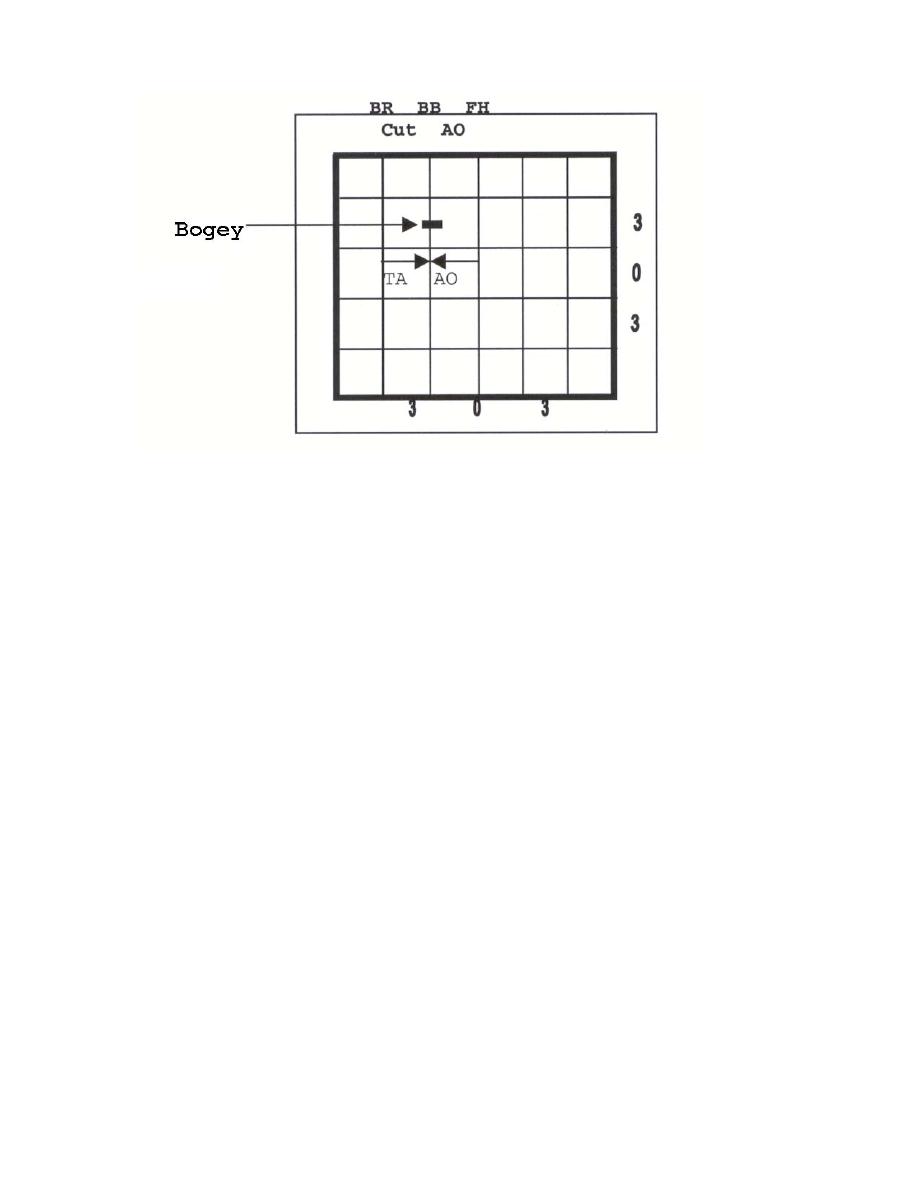 |
|||
|
|
|||
|
|
|||
| ||||||||||
|
|  INTERCEPT PROCEDURES TEXTBOOK
Figure 4
When visualizing an intercept on the scope, target aspect is measured from the cut to the AO.
In Figure 4, the cut is 40L and the AO is 20L. TA is then 20R.
The Co-Speed Intercept
In most cases, establishing the collision course is the initial long-range objective of the
fighter. This allows the fighter to close on the bogey in the quickest way possible. The collision
course is normally terminated at a point in the intercept and the fighter transitions to a firing
position. If a collision course were continued, it would result in the fighter and the bogey
reaching the intersection point of their two flight paths in space at the same time.
A basic assumption in the initial phase at VT-86 is that the fighter and bogey will be co-
speed. If both aircraft are co-speed and on collision course, the distance that the fighter and
bogey will travel to the impact point is the same. As a result, the intercept triangle is an isosceles
triangle.
45
|
|
Privacy Statement - Press Release - Copyright Information. - Contact Us |